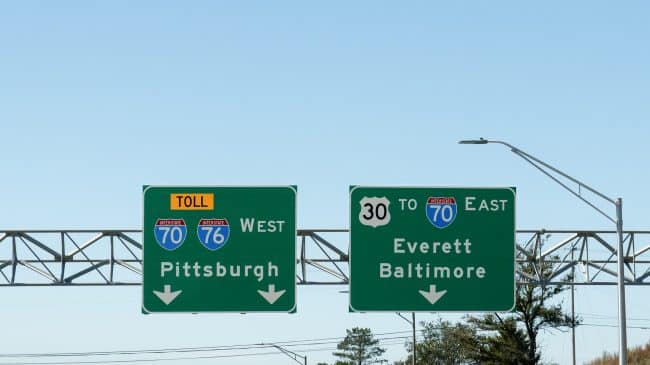In last month’s column, I discussed the House Transportation Committee’s October hearing on the looming insolvency of the Highway Trust Fund. As part of that analysis, I reviewed three questions posed to Congress by Jeff Davis of the Eno Center for Transportation. In his testimony, Davis wrote, “Policymakers need to ask and answer three questions, in order—the first philosophical, the second strategic, and the third tactical.”
- Should the users-pay/users-benefit principle be continued?
- What transportation functions should be covered if the federal government retains that principle?
- How should we raise enough money from users to cope with future needs properly?
In this column, I answer these questions and underscore why it’s time for Congress and state and local governments to start planning for significant changes to highway funding.
On question number one, the users-pay/users-benefit principle should be continued. The lesson I draw from how Europe funds highways is that shifting to general fund spending for highways would be the road to ruin. The countries that kept fuel taxes but abolished the users-pay/users-benefit principle lost the safeguard that the taxes would be dedicated to serving those users.
Today, in many European countries, fuel taxes are two to four times as much as gas taxes in the United States, but the proceeds of Europe’s fuel taxes go into the general fund. As a result, highways have to compete for funding with education, health care, welfare systems, mass transit, military and defense, and more. If the U.S. shifted from a users-pay system to using all general funding, it would lead to seriously underfunded highways.
Moving on to Davis’ second question about what should be funded, it’s not hard to identify significant programs now funded by the Highway Trust Fund that do not directly benefit the roadway users who pay gas taxes. Highway safety agencies should be general-fund supported, like all the other federal safety agencies, including the Consumer Product Safety Commission, Food and Drug Administration, Occupational Safety and Health Administration, and more.
All non-highway modes of transportation, such as mass transit, bikeways, and sidewalks, are essentially local and are primarily supported by state and local governments. If Congress wants to continue funding these transportation modes, it should fund them from the general fund. Those changes, with federal gas taxes dedicated to highways, would come close to making the Highway Trust Fund self-supporting in the short term. However, the impact of ever-higher miles-per-gallon standards for cars and trucks and the heavily subsidized growth of electric vehicles make gas taxes unsustainable in the long term.
So the answer to question three posed by Davis—how to raise adequate highway funding—is we need to phase out per-gallon gas taxes and replace them with mileage-based user fees.
The best way to begin this transition to mileage fees is with the limited-access highways: Interstates and freeways. We already have a widely accepted method of per-mile charging vehicles using those roads: transponders with prepaid accounts. Limited-access highways carry about one-third of all U.S. vehicle miles of travel, so a 10-year conversion of those highways to mileage fees—with refunds issued to drivers for the share of federal fuel taxes miles driven on highways converted to mileage fees—would jump-start the larger transition Only after that portion of the highway system is converted would the transition of lower-level local roads begin, taking advantage of new technologies (such as in-vehicle telematics) to address economies of scale.
It is worth noting that many drivers have understandable privacy concerns, so any mileage fee implementation needs strict privacy provisions. The methods like those Oregon legislated for in its road user charging (RUC) program several years ago help provide a model.
The conversion from per-gallon gas taxes to per-mile roadway charges also raises a question not addressed in Congress’ October hearing: Should there still be a federal highway funding program?
State and local governments own and operate all but a tiny fraction of U.S. roadways. A robust, interoperable per-mile charging system could charge rates sufficient to pay those roadways’ full capital and operating costs, with the megaprojects likely handled by revenue-based long-term design-build-finance-operate-maintain public-private partnerships.
Traffic and revenue expert Ed Regan of CDM Smith has suggested that funding for metro area transit systems could be raised by a metro-area tax on the roadway per-mile charge, which could substitute for today’s federal transit funds, which are paid for by all Americans but benefit only those living in urban areas.
This devolution would not leave the U.S. Department of Transportation with nothing to do. There would still be federal standards for highways linking the states, federal highway safety agencies, federal transportation research, federal transportation statistics, etc., all funded from the general fund.
Self-funded state highways would become a new category of public utility, and road users would receive roadway use bills akin to their electric, gas, water, and cell phone bills. For roads, the bills would show drivers how much they paid for each road category they used each month.
I know that sounds radical or utopian. But there’s a good reason for thinking about something like this: The impending bankruptcy of the federal government. In October, the Penn Wharton Budget Model found that with out-of-control federal budget deficits, Congress has, at most, 20 years to take significant corrective action:
“Under current policy, the United States has about 20 years for corrective action after which no amount of future tax increases or spending cuts could avoid the government defaulting on its debt whether explicitly or implicitly (i.e., debt monetization producing significant inflation). Unlike technical defaults where payments are merely delayed, this default would be much larger and would reverberate across the U.S. and world economies.
This time frame is the ‘best case’ scenario for the United States, under markets conditions where participants believe that corrective fiscal actions will happen ahead of time. If, instead, they started to believe otherwise, debt dynamics would make the time window for corrective action even shorter.”
Shortly after that report, Moody’s, the risk assessment agency, estimated that interest payments on the rising national debt will consume over 25 percent of all federal revenue by 2033, compared with just nine percent last year. Moody’s also lowered the federal government’s credit outlook from “stable” to “negative.” Moody’s said, “Continued political polarization within U.S. Congress raises the risk that successive governments will not be able to reach consensus on a fiscal plan to slow the decline in debt affordability.”
The Social Security Trust Fund will also be insolvent by 2033, according to a report from Trustees of the Social Security and Medicare trust funds. To deal with the federal government’s debt and financial problems, there will have to be some combination of large tax increases and spending cuts to prevent drastic cuts for Social Security recipients.
Our elected officials are mostly closing their eyes to this, but those who care about vital infrastructure need to start preparing for times of significant change in budgeting and funding. While some policymakers and infrastructure advocates may have been dreaming about the Infrastructure Investment and Jobs Act’s large highway, transit, and passenger rail funding increases becoming the new baseline for federal infrastructure funding, this ignores the country’s looming fiscal catastrophe.
The federal government will be unable to continue putting large amounts of federal spending on our grandchildren’s credit cards about 10 years from now. Policymakers and transportation officials have no choice but to start thinking seriously about a new paradigm for funding highways and other vital infrastructure.
A version of this column first appeared in Public Works Financing.

